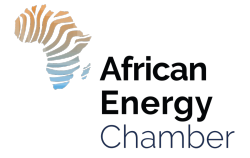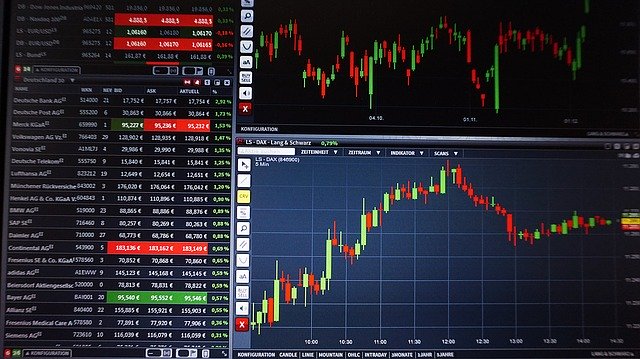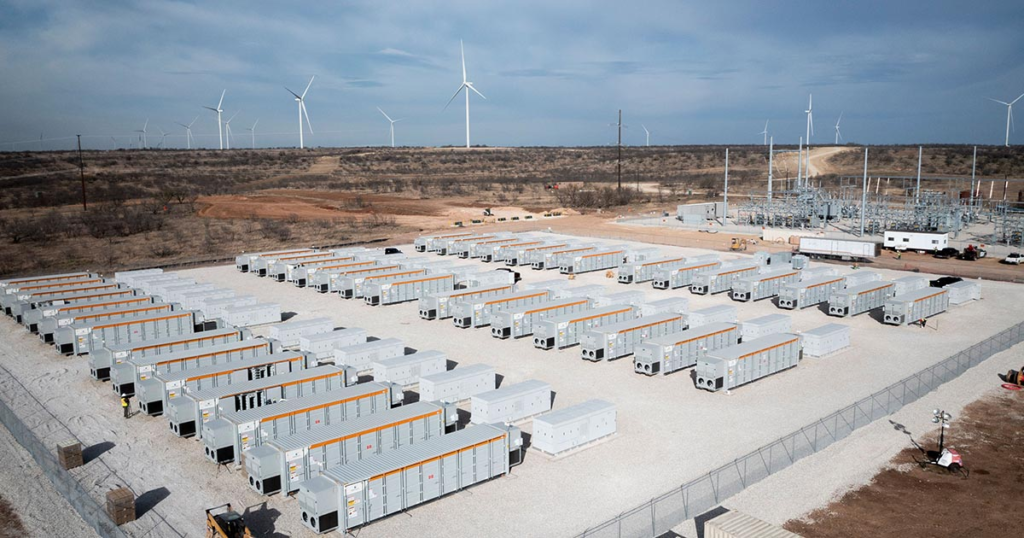
Energy top stories to 26/7/22. OPEC daily basket price stood at $106.27/bl, 25 July 2022
Saudi Arabia’s economy is set to grow at 8.3 percent this year, according to Egypt based investment bank Beltone Financial, revising its earlier estimate of 4.9%.
The upward revision comes on the back of “higher oil production and further supported by a maintained positive trend in the non-oil sector, rebounding from the pandemic woes,” the bank said in a new report on Monday.
Shell USA, Inc. (“Shell USA”) and Shell Midstream Partners, L.P. (NYSE: SHLX) (“SHLX”) today announced they have executed a definitive agreement and plan of merger (the “Merger Agreement,” and the transactions contemplated thereby, collectively, the “Transaction”) pursuant to which Shell USA will acquire all of the common units representing limited partner interests in SHLX held by the public (the “Public Common Units”) at $15.85 per Public Common Unit in cash for a total value of approximately $1.96 billion. A subsidiary of Shell USA currently owns 269,457,304 SHLX common units, or approximately 68.5% of SHLX common units.

SHLX’s assets include interests in entities that own crude oil and refined products pipelines and terminals that serve as key infrastructure to transport onshore and offshore crude oil production to U.S. Gulf Coast and Midwest refining markets and deliver refined products from those markets to major demand centers, as well as storage tanks and financing receivables that are secured by pipelines, storage tanks, docks, truck and rail racks and other infrastructure used to stage and transport intermediate and finished products. Its assets also include interests in entities that own natural gas and refinery gas pipelines that transport offshore natural gas to market hubs and deliver refinery gas from refineries and plants to chemical sites along the U.S. Gulf Coast.
The Board of Directors of Shell Midstream Partners GP LLC, the general partner of SHLX (the “SHLX Board”), delegated to a conflicts committee of the SHLX Board (the “Conflicts Committee”), consisting solely of independent directors, the review, evaluation, negotiation and determination of whether to approve and to recommend that the SHLX Board approve the Transaction. The Conflicts Committee, after evaluating the Transaction in consultation with its independent legal and financial advisors, unanimously approved and recommended that the SHLX Board approve the Transaction. Following receipt of the recommendation of the Conflicts Committee, the SHLX Board reviewed the terms of the Transaction and the Merger Agreement, and unanimously approved the Transaction. Read More
BG International Limited, an affiliate of Shell U.K. Limited, has taken the final investment decision (FID) to develop the Jackdaw gas field in the UK North Sea, following regulatory approval earlier this year. Jackdaw will comprise a wellhead platform that is not permanently attended, along with subsea infrastructure which will tie back to Shell’s existing Shearwater gas hub.
The project is expected to come online in the mid-2020s, and at peak production rates, could represent over 6% of projected UK North Sea gas production in the middle of this decade, with operational emissions of less than 1% of the whole UK basin. That is enough energy to heat 1.4 million homes.
“We are committed to providing our customers with secure and stable supplies of energy, and to do so responsibly, efficiently and economically,” said Shell Upstream Director, Zoe Yujnovich. “Investments like Jackdaw are consistent with the UK’s North Sea Transition Deal and Shell’s Powering Progress strategy, providing the energy people need today while serving as the foundation for investments in the low carbon energy system of the future.”

Jackdaw is part of Shell U.K.’s broader intent to invest £20 to £25 billion in the UK energy system in the next decade, subject to Board approval and stable fiscal policy, with the aim of investing 75% in the development of low and zero-carbon products and services. Hundreds of millions of pounds are expected to be spent in the UK supply chain during Jackdaw’s construction, which is a significant boost to companies, jobs and the prosperity of communities.
Projects like Jackdaw will help ensure the overall decline in UK North Sea production is gradual rather than too steep, matching a gradual drop in hydrocarbon demand as the energy transition takes place. Gas from the Jackdaw field will come ashore at St Fergus, where Shell is involved in the development of the Acorn Carbon Capture and Storage project, which could sequester carbon dioxide (CO₂) from industrial clusters in Scotland, the UK and northern Europe. The Acorn project could also reform natural gas into low-carbon hydrogen, by capturing and storing the CO₂. Read More–>
African Export-Import Bank (Afreximbank) has officially partnered with the continent’s premier energy event, African Energy Week (AEW) 2022 (AECWeek.com) – which takes place from October 18-21 in Cape Town – in a move expected to reawaken a new era of deal-signing, local content and multi-sector expansion. Under a mandate to make energy poverty history in Africa by 2030, the partnership will see both AEW and Afreximbank uniting the power of investment and value creation, driving stronger energy developments in 2022 and beyond. Read More
Eni and SONATRACH announce today a further discovery in Sif Fatima II concession, located in the Berkine North Basin in the Algerian desert.
The Rhourde Oulad Djemaa Ouest-1 (RODW-1) exploration well, in the Sif Fatima II research perimeter, is the third well in the exploration drilling campaign. It led to a discovery of oil and associated gas in the Triassic sandstones of the Tagi reservoir. During the production test, the well produced 1,300 bbl/day of oil and about 2 mmscfd of associated gas.

The RODW-1 discovery comes after the significant discovery of HDLE-1 in Zemlet el Arbi, announced in March 2022, and the successful appraisal well HDLS-1 in the adjacent Sif Fatima II.
The development of these discoveries will be fast-tracked, thanks to their proximity to existing BRN/ROD facilities.
The RODW-1 discovery confirms the validity of Eni’s and SONATRACH’s successful near-field and infrastructure-led exploration strategy, that allows a rapid valorisation of the new resources.
The Zemlet el Arbi and Sif Fatima II concessions are operated by a joint venture between Eni (49%), and SONATRACH (51%). The discovery is part of the new exploration campaign which will include the drilling of 5 wells in the Berkine North Basin.
Eni has been present in Algeria since 1981. With an equity production of 100,000 barrels of oil equivalent per day, Eni is the main international company in the country. Read More
Hess Corporation (NYSE: HES) today announced publication of its annual sustainability report, which provides a comprehensive review of the company’s strategy and performance on environmental, social and governance (ESG) programs and initiatives. Hess Corporation’s 2021 Sustainability Report is available on the company’s website at www.hess.com/sustainability/sustainability-reports.
“This year marks the publication of our 25th annual sustainability report, demonstrating our longstanding commitment to sustainability and transparency,” CEO John Hess said. “We believe climate risks can and should be addressed while at the same time meeting the growing demand for affordable and secure energy, which is essential to ensuring a just and orderly energy transition. Our strategy is to deliver high return resource growth, a low cost of supply and industry leading cash flow growth – while at the same time maintaining our industry leadership in ESG performance and disclosure.”

Hess Corporation’s 2021 Sustainability Report shows how sustainable business practices are integrated into the company’s strategy, goals, metrics and daily operations for the benefit of all of its stakeholders. Highlights include:
Reducing greenhouse gas emissions: After significantly outperforming its five year emissions reduction targets for 2020, Hess set new five year reduction targets for 2025 – to reduce both operated Scope 1 and 2 greenhouse gas (GHG) and methane emissions intensities by approximately 50% from 2017 and to achieve zero routine flaring from its operations by the end of 2025. These targets exceed the carbon intensity reductions by 2030 assumed in the International Energy Agency’s (IEA) Sustainable Development and Net Zero Scenarios, which are consistent with the Paris Agreement’s aim to limit the global average temperature rise to well below 2°C. In 2021, Hess made significant progress toward these five year targets. To help mitigate societal emissions, Hess is contributing to groundbreaking work by the Salk Institute to develop plants with larger root systems that are capable of absorbing and storing potentially billions of tons of carbon per year from the atmosphere. Read More
CME Group, the world’s leading derivatives marketplace, today announced that open interest in Copper options surpassed 100,000 contracts on July 21, 2022, reaching an all-time record after multiple back-to-back open interest record days throughout the week.

“Seen as a bellwether for the global economy, market users are turning to our Copper options to manage risk as expectations for an economic slowdown continue to increase,” said Jin Chang, Global Head of Metals at CME Group. “Our clients clearly value the defined risk/reward structure of our Copper options that provide an effective way to manage adverse price movements, as reflected in recent volume and open interest. We look forward to continuing to provide enhanced solutions across global base metals markets.”
Four of the top five open interest records occurred over the last five trading days, including:
Monday, July 18: 97,496 contracts
Tuesday, July 19: 97,593 contracts
Wednesday, July 20: 99, 837 contracts
Thursday, July 21: 100,632 contracts More
In 2020, rich natural gas resources offshore Mauritania and Senegal were the subject of the biggest long-term liquefied natural gas (LNG) contract signed that year.
The agreement between American oil firm Kosmos Energy, its partners, and BP Gas Marketing Limited, was for LNG from Phase 1 of the Greater Tortue Ahmeyim project, offshore Mauritania and Senegal. The deal calls for Kosmos to provide 2.45 million tonnes per annum (mtpa) of LNG for an initial term of up to 20 years.
The deal was a milestone for the companies and for Senegal and Mauritania.

But frankly, with so many natural gas projects starting up in the two countries, we should be hearing about even more long-term gas sales contracts.
Currently, Kosmos Energy and its partners (BP, Senegal’s state-owned oil company, Petrosen; and Mauritania’s Societe Mauritanienne des Hydrocarbures) have only succeeded in securing sales contracts for Phase 1 volumes of the Greater Tortue Ahmeyim Project. This is despite the fact the project is estimated to have 15 trillion cubic feet of gas production potential, enough for 30 years of production or more.
In another promising BP and Kosmos Energy partnership, the ultra-deepwater Yakaar-Teranga gas field offshore Senegal — holding an estimated 2,739 billion cubic feet of natural gas reserves — only a fraction of Phase 1 volumes have been contracted.
And that’s more than we can say for BP’s BirAllah project in Mauritania, projected to generate 1,642 barrels per day of crude oil and condensate, 277 million cubic feet (Mccfd) per day of natural gas, and 1,304 Mmcfd of liquid natural gas by 2030. As of yet, production from BirAllah remains uncontracted. Read More
Neptune Energy today announced the safe and successful drilling of four development wells on the operated Fenja field in the Norwegian Sea, in preparation for production start-up.
This marks an important milestone in the development of Fenja, which is scheduled to come on stream in the first quarter of 2023 and will produce approximately 28,000 barrels of oil equivalent per day (boepd) at plateau.
Operated by Neptune Energy, the Fenja development consists of two subsea templates tied back to the Njord A platform via a production pipeline, water and gas injection pipelines and an umbilical. The wells consist of two oil producers, one water injector and a gas injector. The gas injector will be converted to a gas producer towards the end of field life.

Neptune Energy’s Director of Projects & Engineering in Norway, Erik Oppedal, said: “The completion of the drilling campaign on the Fenja field represents the final step of the development project and we are now ready for production start-up. This region of the Norwegian Sea is a strategically-important growth area for Neptune, with high prospectivity.”
Earlier this summer, Equinor, on behalf of Neptune, successfully pulled in the Fenja risers and dynamic umbilical to the host platform, Njord A, which is now back on the field. Final tie-in activities will be completed shortly and all subsea facilities are ready. Fenja has been developed with an electrically trace-heated (ETH) pipe-in-pipe solution that will transport oil from the Fenja field to the Njord A platform. At 37 kilometres, it is the world’s longest ETH subsea production pipeline.
The Fenja oil and gas field is situated at a water depth of 325 metres, around 36 kilometres southwest of the Equinor-operated Njord A platform. Neptune holds a 22.5% owner share in Njord A which is located 120 kilometres north of Kristiansund.
The wells were drilled by the Deepsea Yantai, a semi-submersible rig, operated by Odfjell Drilling.
Fenja partners: Neptune Energy (Operator, 30%), Vår Energi (45%), Suncor Energy (17.5%), DNO (7.5%) Read More

Subsea 7 S.A. (Oslo Børs: SUBC, ADR: SUBCY) today announced transactions made in accordance with its share repurchase programme during the week commencing 18 July 2022.
Date on which the share repurchase programme was announced: 25 July 2019, with a two-year extension announced on 16 April 2021.
The duration of the share repurchase programme: until 14 April 2023.
In the period from 18 July 2022 until 22 July 2022 Subsea 7 S.A. has repurchased a total of 700,060 own shares at the Oslo Stock Exchange at an average price of NOK 77.2283 per share. Read More

| Oil and Gas Blends | Units | Oil Price $ | change |
| Crude Oil (WTI) | USD/bbl | $98.48 | Up |
| Crude Oil (Brent) | USD/bbl | $107.02 | Up |
| Bonny Light | USD/bbl | $118.06 | Down |
| Saharan Blend | USD/bbl | $117.77 | — |
| Natural Gas | USD/MMBtu | $8.91 | Up |
| OPEC basket 25/07/22 | USD/bbl | $106.27 | Down |

Hitachi Energy, a market and technology leader in transmission, distribution and grid automation solutions, announced it has won a major order from Adani Electricity Mumbai Infra Limited, part of India’s largest privately-owned power company Adani, to provide a high-voltage direct current (HVDC) transmission system which will link Kudus to Mumbai, on India’s west coast.
Mumbai is experiencing a rapid increase in electricity consumption, seeing peak demand increasing to 3,850 megawatts (MW) in 2022, of which around 2,100 MW was supplied from outside sources*1. The new HVDC link will supply up to 1,000 MW of electricity, increasing power from outside of the city by almost 50 percent. The link will strengthen the existing transmission infrastructure and help Adani to ensure a reliable power supply in the region.
Globally, power loads in cities are increasing, especially in densely populated areas where land is already scarce, and difficulties can arise whenever new right-of-way must be secured for traditional transmission lines. HVDC technology enables large amounts of high-quality electricity to be delivered where it is most needed with complete control, with a very compact transmission system.
Mumbai is one of the world’s most densely populated cities, with a population of over 20 million, and, by utilizing Hitachi Energy’s compact HVDC system and 50 kilometers of underground cables rather than overhead lines, almost 2.3 square kilometers of land will be saved – the equivalent of more than 320 soccer pitches. Read More

Hitachi Energy announces that it has signed a Memorandum of Understanding (MoU) with H2 Green Steel to leverage electrification, digitalization, and hydrogen to support the decarbonization of the steel industry.
H2 Green Steel, a Swedish industrial start-up, is on a mission to accelerate the global steel industry’s greatest technological shift by eliminating almost all of carbon dioxide (CO2) emissions from the steel production process. It is planning to build its first fossil-free steel plant in Boden, Sweden, alongside a giga scale electrolyzer plant for the production of green hydrogen.
The MoU outlines a collaboration which is built on 3 pillars: 1) Hitachi Energy’s equity investment in H2 Green Steel; 2) products and services from Hitachi Energy that are needed to construct and improve the electrical infrastructure to power steel production and giga scale electrolyzer plants; 3) green steel to be used in the manufacturing of Hitachi Energy’s products, once H2 Green Steel starts production.
Over the past decade, expanding steel production has increased total energy demand and CO2 emissions¹, which contributes to about eight percent of the world’s global industrial carbon emissions².
Starting with the plant in Boden, H2 Green Steel will leverage Hitachi Energy’s capabilities to optimize customers’ value chain to plan, build, operate, and maintain the power infrastructure that includes IT and operational technology (OT). The steel production in Boden will use green hydrogen instead of coal in a fully integrated process using end-to-end digitalization, which reduces up to 95 percent CO2 emissions compared to traditional steelmaking. This will be equivalent to removing 3 million passenger cars per year from road³. Read More
BKW Power Grid plans, builds, and operates grid and metering infrastructures. To resolve challenges in the distribution grid resulting from increasing integration of renewable source of energy, BKW Power Grid collaborated with Hitachi Energy to co-create a solution.
Following the co-creation process, Hitachi Energy’s transformer plant in Brilon, Germany recently designed, manufactured and supplied an 8 MVA medium-voltage Line Voltage Regulator (LVR) to BKW Power Grid to help regulate voltage fluctuations in the distribution grid of Energieversorgung Talschaft Lötschen AG at Kippel in Lötschental, Switzerland.
The rapidly increasing generation of electricity from renewable resources is causing a change in the structure of the electrical energy supply. With this, the traditional centralized system with a few large electricity producers is transitioning to become a decentralized system with many small producers that feed directly into the local distribution grid. In addition, increasing power demand by newer technologies like EV (Electric Vehicle) charging add further complications. This results in frequent and strong voltage fluctuations that exceed the permitted, standard deviations from the nominal voltage. As a result, the feed-in power must often be limited or interrupted. Feeding full power to the grid without taking such measures could result in adverse grid conditions and failure of customer installations.
Conventional measures to overcome this would be to install a new feeder which would be very expensive as well as unfavorable to the environment and surrounding areas. Moreover, it would take a long period of time for completion which would mean signification loss of productivity and efficiency.
A Line Voltage Regulator (LVR) from Hitachi Energy is specially designed to solve this problem with the use of a “booster / feeder” technology in combination with mechanical switching devices. Read More

Siemens Energy Inc, one of the world’s leading energy technology companies, announces it is joining the Amazon Web Services (AWS) Partner Network (APN), a global community of partners that leverage programs, expertise, and resources to build, market, and sell customer offerings.
This expanded relationship includes listing Siemens Energy’s Managed Detection and Response (MDR) industrial cyber security solution in AWS Marketplace, a digital catalog that makes it easy for customers to find, compare, and immediately start using the software and services that run on AWS. This MDR security offering in AWS Marketplace is built for energy and utilities, by an integrated energy technology company focused across the entire energy value chain. As energy companies strive to protect physical infrastructure from escalating cyber threats, Siemens Energy’s MDR on AWS reduces the cost and technical barriers to achieving strong, fast, comprehensive cyber defense.
Expanding access to state-of-the-art cybersecurity is essential to ensuring reliable electricity and fuel supplies. Cyber risks to infrastructure are escalating amid the ongoing transition toward renewable and low-carbon energy sources and the accompanying expansion of digital devices in the energy sector. Siemens Energy’s MDR will help customers leverage analytics to secure their infrastructure while reducing costs, improving efficacy, and reducing emissions.
Siemens Energy’s industrial monitoring and detection solution defends critical infrastructure against cyberattacks, helping protect communities around the world from supply chain disruptions. AWS’s capabilities allow MDR’s technology to quickly collect and analyze large volumes of data to monitor for cyber threats, giving energy sector chief information security officers (CISOs) the power to detect and uncover attacks before they execute.
Secure cloud capabilities that can integrate digital applications and leverage sensitive data – such as real-time monitoring and detection – add an important and cost-effective tool to the defensive arsenal for CISOs and industrial security analysts. Read More
Two new power links set the course for more wind energy in the German power grid: DolWin4 and BorWin4 will transport up to 1.8 gigawatts (GW) of green wind power from several wind farms in the German North Sea to land with low losses. As a result, they will be able to meet the demand of a major city like Hamburg with 1.8 million inhabitants. Amprion Offshore GmbH has now commissioned Siemens Energy to supply the necessary technology for the converter stations of their first grid connection projects. The order value is in the high three-digit million-euro range, making it the largest offshore grid connection order Siemens Energy has received to date. Read More

U.S. Rig Count is up 2 from last week to 758 with oil rigs unchanged at 599, gas rigs up 2 to 155 and miscellaneous rigs unchanged at 4. Canada Rig Count is up 4 from last week to 195, with oil rigs down 1 to 124, gas rigs up 5 to 71.
| Region | Period | Rig Count | Change from Prior |
| U.S.A | 22 July 2022 | 758 | +2 |
| Canada | 22 July 2022 | 195 | +4 |
| International | June 2022 | 824 | +7 |
Enel Green Power announced the completion of its first large-scale hybrid wind project, Azure Sky Wind + Storage, as well as the addition of battery storage facilities at the operating Roadrunner and High Lonesome renewable project sites, helping ensure energy availability for Texans amid high demand periods.
“We’re committed to connecting Texans with clean and cost-effective electricity through our renewable projects. The Azure Sky wind + storage project and storage additions at Roadrunner and High Lonesome help to add measurable value in the form of storage capacity and reliability to support the state’s electricity system,” said Paolo Romanacci, head of Enel Green Power in the US and Canada. “Enel Green Power’s projects provide more generation, more resource diversity, and more dispatchable storage – three key elements of Texas’s goal to reform its power grid.”

Located in Throckmorton County, Azure Sky wind + storage is Enel Green Power’s first large-scale hybrid wind project globally. Features include a 350 MW wind facility, expected to generate around 1.3 TWh of renewable energy yearly, paired with a 137 MW/205 MWh battery storage facility. To support companies with distributed energy needs to collaboratively purchase renewable energy, Enel Green Power signed an aggregated power purchase agreement (PPA) with corporate partners Akamai, MilliporeSigma, Synopsys and Uber. Kellogg Company, HP Hood and lululemon also signed PPAs to purchase clean energy output.
Enel has installed grid-connected battery systems at the sites of the Roadrunner solar and High Lonesome wind projects. Each battery system will add 57 MW/86 MWh of storage capacity to the grid, supporting grid reliability in a state often experiencing high demand from elevated temperatures and extreme weather. The systems will also help balance intermittent generation profiles in the renewables-saturated western region of ERCOT. With a total of 170 MWh of battery storage capacity between the two projects, Enel can dispatch flexible capacity, providing services to support resiliency amid shifting grid conditions in ERCOT. By early 2023, Enel will operate a portfolio of 12 battery energy storage systems able to store over 1,290 MWh in Texas. Read More
First Hydrogen Corp. announced its’ subsidiary, First Hydrogen Limited, has appointed Afkenel Schipstra as Chief Operational Officer to grow the Energy division. Ms. Schipstra joins First Hydrogen from the multinational utility company ENGIE, where she held the role of Senior Vice President of Hydrogen Business Development. She was responsible for large
scale hydrogen projects in the Netherlands, including HyNetherlands, a 1.85 GW green hydrogen value chain, which covers the production, transportation and usage of green hydrogen. She is also a Non-Executive Director and Chair of the Audit & Risk Committee of HydrogenOne Capital Growth plc., the first hydrogen fund to list on the London Stock Exchange.
Prior to ENGIE, Afkenel was Hydrogen Program Manager at TSO Gasunie N.V., where she developed a roadmap for the company’s hydrogen activity and, in her previous role of Senior Business Development Manager, she worked on carbon capture, usage and storage (CCUS) and District heating projects. Passionate about bringing more women into the industry she is an active member of Women in Hydrogen and a founding member of VIEN, a community of energy leaders committed to bridging the diversity gap to create a sustainable and inclusive future for the sector. Read More
Dana Incorporated (NYSE: DAN) will release its 2022 second-quarter financial results on Wednesday, August 3, 2022. A press release will be issued at approximately 7 a.m. EDT, followed by a conference call and webcast at 10 a.m. EDT. Read More
DNO ASA, the Norwegian oil and gas operator, has completed buybacks in the DNO03 bond (ISIN: NO0010852643) totaling USD 25.2 million. The purchased bonds will be cancelled. Following cancellation, the outstanding amount of the DNO03 bond will be USD 150.9 million. The buybacks do not change the fixed maturity date of the DNO03 bond. Read More
The oil-producing cartel has repeatedly signaled that it is in no rush to deploy its spare capacity to boost global supply and bring down prices. One reason for this is the prices themselves: Saudi Arabia has been raising its oil prices for Asian buyers for several months in a row now because it can. The other reason is that spare capacity is limited. Read More
Baker Hughes has said its oilfield services (OFS) division has secured a four-year contract to provide artificial lift solutions for the Missan [Maysan] oilield in Iraq.
In a statement announcing its results for the second quarter of 2022, the US-based company said the contract includes the supply of electrical submersible pumps (ESP), surface equipment and dedicated field services.
The ESPs will be utilized to maximize oil recovery and extend system run-life in harsh environments, it added.
The company, which also has contracts at the Nasiriyah and Garraf [Gharraf] oil fields, recently committed to pulling out of operations in Iraqi Kurdistan, following the Federal Supreme Court ruling that oil contracts signed with the Kurdistan Regional Government (KRG) are unconstitutional. Read More

5 immediate coordinated steps the EU needs to take ahead of winter
Europe is in the midst of a perilous gas crisis that has been building for many months as Russia has held back supplies – and immediate action is critical to avoid a very difficult winter, according to our Executive Director Fatih Birol, who proposes five concrete steps EU leaders to address the situation.
In September, months before Russia launched its invasion of Ukraine, we pointed out that Russia was preventing significant amounts of gas from reaching Europe. In January, we further raised the alarm, flagging that Russia was creating “artificial tightness in markets” and driving up prices at exactly the same time as tensions were rising over Ukraine. And just a week after Russia invaded Ukraine, we published our 10-Point Plan to help Europe quickly reduce its reliance on Russian gas.
Since then, Russia has squeezed gas flows to Europe even more, and could stop them completely at any moment. To reduce the risk of major gas shortages and rationing in the coming winter, Dr Birol stresses the urgency of actions to reduce gas demand now during the summer months so that countries can put the saved gas in storage for the winter.
The five immediate coordinated actions he recommends are:
Encourage industrial users to reduce demand through auctions
Minimise the use of gas for generating electricity
Enhance coordination among gas and electricity operators across Europe
Bring down household electricity demand by setting cooling standards and controls
Harmonise emergency planning across Europe Read More
India will have a battery storage potential of 600 gigawatt hour (GWh) by 2030,, and demand for electric vehicles, stationary storage and consumer electronics will mainly drive adoption of battery storage, Read More
OilandGasPress Energy Newsbites and Analysis Roundup |Compiled by: OGP Staff, Segun Cole @oilandgaspress.
Disclaimer: News articles reported on OilAndGasPress are a reflection of what is published in the media. OilAndGasPress is not in a position to verify the accuracy of daily news articles. The materials provided are for informational and educational purposes only and are not intended to provide tax, legal, or investment advice.
Please email us your industry related news for publication info@OilAndGasPress.com
Follow us: @OilAndGasPress on Twitter |



